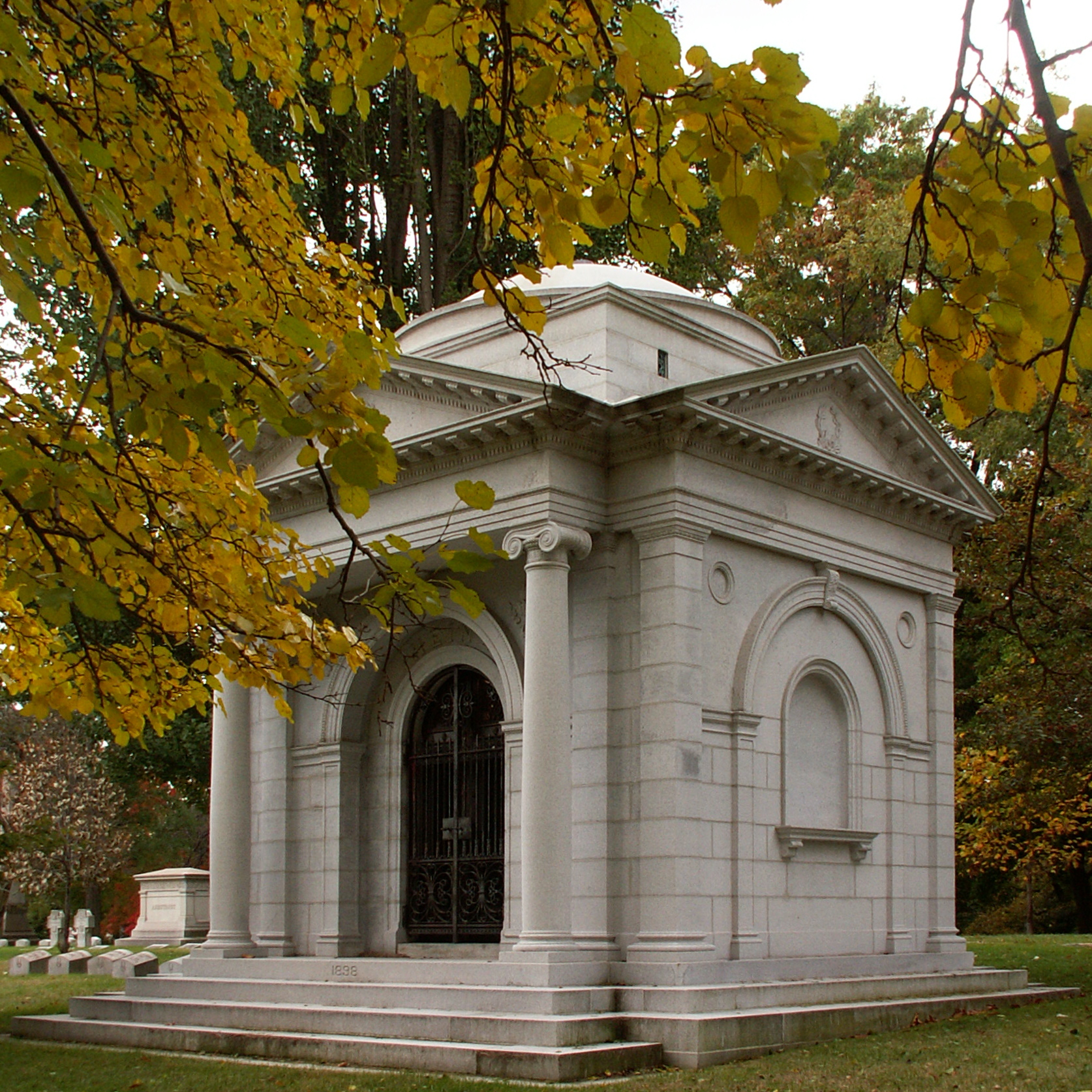
An elegant little Gothic chapel with a bit of Art Deco flair. The stained glass inside shows Charity distributing gifts to Music, Drama, and the Arts.


An elegant little Gothic chapel with a bit of Art Deco flair. The stained glass inside shows Charity distributing gifts to Music, Drama, and the Arts.



This magnificent Roman temple holds more dead people than any other mausoleum in the Homewood Cemetery, with an extensive basement accessible by a removable section of mosaic floor. (How’s that for a scene in a Gothic novel?) H. J. Heinz, the pickle and ketchup king, and generations of his descendants are buried here, including his great-grandson Senator John Heinz.

Addendum: The architects of the mausoleum were Vrydaugh & Wolfe, who also designed Warwick House for Howard Heinz.

Another hulking black Pittsburgh Romanesque mausoleum, this one is distinguished by a very unusual apse. In many cemeteries, unfortunately, vandalism has persuaded the keepers to block the entrances to mausoleums with ugly concrete. It now becomes a task for archaeologists from future centuries to discover what is inside that apse.



The Romanesque style and the sooty blackness of the stone make this mausoleum look particularly Pittsburghy. The Theodore F. Straub mausoleum in the Homewood Cemetery is identical (but without the cross), so this was probably a dealer’s standard model.
The statue on top seems to be a version of that very popular flower-strewing mourner who appears in many of our cemeteries, usually handless if she is at ground level; compare the Aul, Potts, Alexander H. King, Baxmyer, and Nickel monuments.


